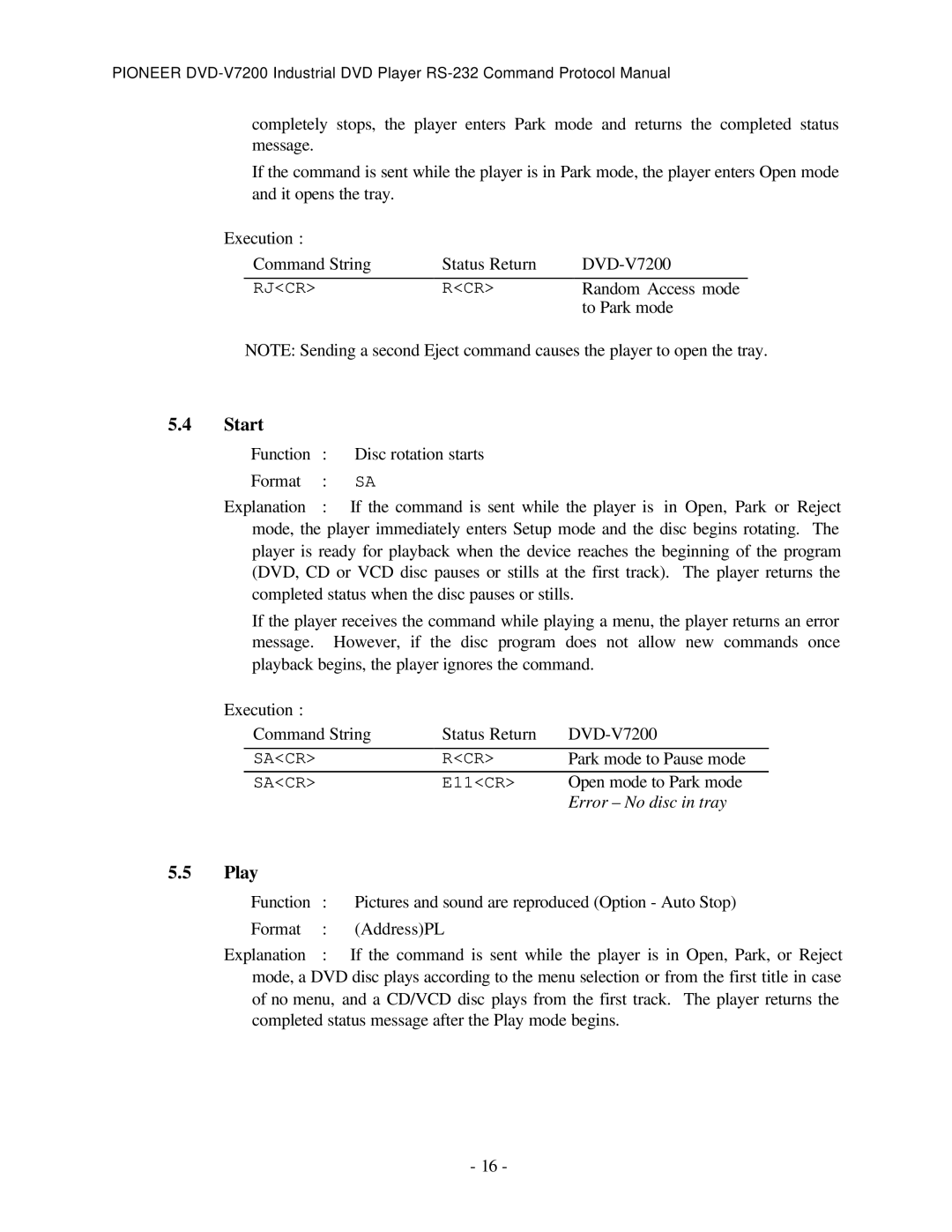RS-232C specifications
The Pioneer RS-232C is a significant component in the realm of communication technology, especially known for its application in serial communications. Initially introduced in the 1960s as part of the EIA-232 standard, RS-232C has evolved through various iterations to become a foundational interface for connecting data communication equipment (DCE) with data terminal equipment (DTE). This article outlines its main features, technologies, and characteristics.One of the hallmark features of RS-232C is its ability to facilitate point-to-point communication. It allows for a direct link between two devices, making it suitable for a variety of applications, including modems, printers, computers, and other peripherals. The RS-232C interface typically uses a 25-pin connector, although a 9-pin variant is also common in many modern devices. This interface is based on serial communications, where bits are sent sequentially over a single channel, leveraging fewer wires compared to parallel communication methods.
In terms of technology, RS-232C operates primarily at voltage levels of +12V to -12V, which provide the necessary signaling for data transmission. The standard supports baud rates ranging from 300 to 115200 bps, accommodating various data transfer speeds depending on the needs of the hardware involved. RS-232C defines various electrical characteristics and timing requirements, ensuring robust performance over relatively short distances, typically up to 15 meters, depending on the baud rate.
Another essential aspect of the RS-232C standard is its use of asynchronous communication, allowing devices to transmit data without having to synchronize their clocks. Each data packet typically consists of a start bit, a predefined number of data bits (usually 7 or 8), an optional parity bit for error-checking, and one or more stop bits. This method allows for error detection and ensures data integrity during transmission.
Despite its age, the RS-232C interface remains relevant, especially in industrial applications, instrumentation, and legacy systems. Its simplicity, low cost, and widespread acceptance make it a versatile choice for connecting various devices, even in a world increasingly dominated by USB and other modern interfaces.
In conclusion, the Pioneer RS-232C is a remarkable testament to the enduring nature of serial communication technology. Its straightforward design, reliability, and ease of integration continue to make it a staple in numerous applications, underscoring its significance in the landscape of data communication.
